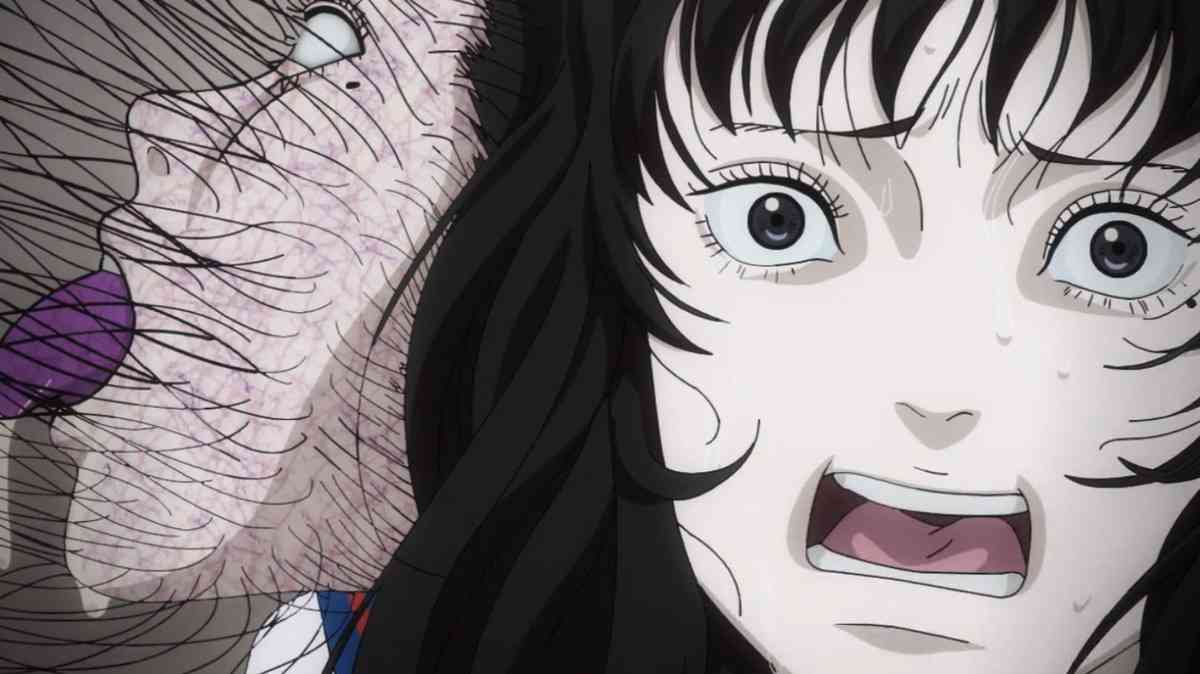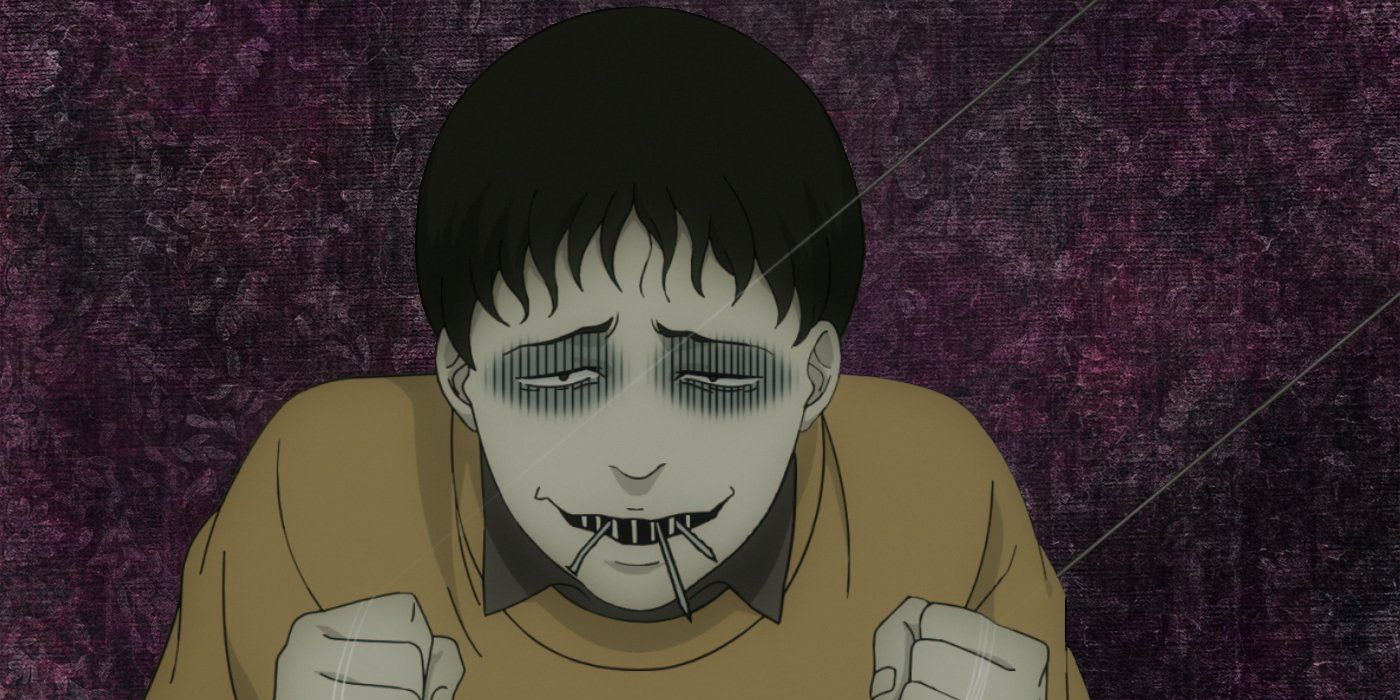
Junji Ito in Maniac: Japanese Tales of the Macabre, unleashes the genius of a horror anthology on Netflix. The anime series is inspired by the disturbing nightmares of the eponymous mangaka: Junji Itō. In fact, Studio Deen adapts the exquisite original material through twelve episodes, that feature twenty different stories (some episodes condense two tales).
The cinematic J-horror (Japanese horror) is a heterogeneous melange of frightening parables. They are so universal that they easily remind Western stories that have the same goal of frightening the recipients of the narration.
Children of all centuries and nationalities have always been fascinated by the macabre. For instance the original fairytales by the Grimm Brothers, Charles Perrault and Hans Christian Anderson are characterised by their dark and morbid nature. Even more 20th century storytelling phenomena from The Addams Family to Gossebumps — the the children’s horror fiction novels by R. L. Stine — have kept their young fruiters hooked with the most ghoulish situations.
Junji Ito in Maniac: Japanese Tales of the Macabre, captivates its viewers with the psychedelic and alienating theme song Paranoid by MADKID, that sets the atmosphere for the phantasmagorically spooky adventures in the series.
The various tales have one things in common: the ability to lead spectators into a state of sinister disquietude. The mode is more unsettling than creepy. Each story makes you wonder whether the circumstance is baloney or paranormal, whether the characters are afflicted by autosuggestion or haunted by authentic unearthly presences. There is no defined demarcation between the obsessions of our minds and the inexplicable mysterious of the world we live in.

The very first episode, The Strange Hizikui Siblings, is about a photographer with an interest in spirits and ghosts. She pays a visit to the creepy home where six Hizikuri brothers and sisters live, and witnesses a peculiar situation where nothing turns out to be what it seems.
When it comes to visions and traumatic memories, The Story of the Mysterious Tunnel shows Goro who returns to the tunnel where he saw his mother once walk into. Here he discovers some supernatural radiation that acts as portal. Cut to: the Ice Cream Bus, where an ice cream truck arrives in the neighbourhood, driven by an alluring young man. The divorced father Sonohara allows his son Tomoki to take a ride and eat the frozen snack. Yet the epilogue of the tale undoubtably teaches children never to accept sweets from strangers.
In Junji Ito in Maniac: Japanese Tales of the Macabre there is also a predilection for beheaded characters. This is blatant in Hanging Balloon, the story of a pop-singer Terumi Fujino who dies apparently by suicide. After her death multiple sightings of Terumi’s ghost appear in the form of a gargantuan, decapitated head wandering in the sky. But this turns out to be only the beginning of a series of deaths.
The macabre storytelling doesn’t necessarily follow a logical sense in justifying the gratuitous cruelty and brutality expressed by certain characters. An example is seen with Soichi, who pesters his studious brother in Four x Four Walls. Koichi cannot concentrate because his younger brother is being noisy in the floor above him. Even the bizarre soundproof technique that gets installed in his room won’t solve the rambunctious sound, leading to a rather morbid outcome. That episode also features another story of persecution: The Sandman’s Lair. In this case, Yuji is being tormented by his nightmares of his alter-ego who tries to enter the real world when he falls asleep. As the narrative unfolds we witness how evil wins ineluctably over everything.
Alternate dimensions, uncanny denizens, doppelgängers pervade the anthology ferociously like in Intruder. In this tale, Ohikiri shares with the new friends he made at the library the fact that he has been hearing suspicious “disembodied” footsteps in his house where he lives alone. The revelation they will encounter will be overwhelming. What follows is Long Hair in the Attic that kicks off with Chiemi breaking up with her boyfriend, the one who encouraged her to grow her dark long mane. When she is back home a ghastly rodent gets stuck in her hair, triggering some rather unexpected consequences.
Junji Ito in Maniac: Japanese Tales of the Macabre also contemplates spiteful entities, that do not imply a morality. They convey a source of karmic sadism that finds no reason of being. For example, Mold narrates about Akasaka’s trouble with the infectious mould in the house he’s rented for a year to his former teacher, Mr. Rogi. The revelation of its origin is utterly gruesome. Straight up next is Library Vision that opens with stupendous autumn colours. But the beauty of the setting does not prevent decadence and obsessiveness to take over, since the fixation of Koko’s husband for his books gets out of control when she borrows a copy of ‘Renée of the Winter Wind.’

Wickedness also becomes a tool of divine retribution throughout the series, like in Tomb Town. In this episode Tsuyoshi, after accidentally hitting a girl with his car, encounters various gravestones in the middle of the track. Once he reaches and his sister reach the town of their friend Izumi, they discover a very unusual burial practice, as well as the identity of the girl involved in the crash.
Another doomed car accident can be found in Layers of Terror, when Remi loses half of her face and finds out she has simply pealed a layer off and her younger self still exists within her. Just like a tree’s growth rings, Remi’s various epidermises epitomise different vestiges of her life. This discovery leads the narrative towards a Mommy Dearest meets Tale of Tales direction. Immediately afterwards is The Thing That Drifted Ashore, a tale about an eerie marine creature that is washed up on a beach. When it starts decomposing people find out the aquatic mammal contains countless human zombie-carcasses. This eco-thrilling tale looms as a warning for human malpractices in the natural world.
Collective hysteria and insanity become a collective behaviour in Tomie﹒Photo, that revolves around a transfer student, part of the Disciplinary Committee, who disapproves the way Tsukiko Izumisawa has been taking pictures of popular boys in school to sell them. This story provides a spooky and animated twist to Blow Up.
The anthology of horror also provides an eerie descent to hell with Unendurable Labyrinth. In this story Noriko and Sayako get lost in the mountains where they encounter a community of ascetic monks. They ultimately end up in an ominous temple of Tantric Buddhist faith. Following this story is the tale of Kuriko, a girl, who is The Bully targeting the innocent Naoya she has been playing with. However, time will convey an unexpected twist of events to the way these two interact, leading nevertheless to the proof that old habits die hard.
In terms of inauspicious settings, Alley is where the boarding school room of a boy overlooks. From this secluded space he hears inhumane voices, and eventually a murderous secret is brought to light. Subsequent to this disquieting story we continue with Mr. Okabe, an art teacher who is found dead, exactly like the object he is famous for owning, a Headless Statue. According to the professor, art doesn’t require a face and it turns out that the villains think otherwise.
The mysterious Whispering Woman, Mitsu Uchida, welcomes the assignment of being the caretaker of Mayumi, a girl affected by panic attacks and hysteria. The lady has a problematic situation at home, that leads to an extreme circumstance. The final macabre story that closes this series is Soichi’s Beloved Pet about the cute kitty Coron, where the animal-human bond becomes hideously mischievous.
Junji Ito in Maniac: Japanese Tales of the Macabre covers all dimensions of horror, from splatter to thrilling:. We find undead beings, ectoplasms, nooses, poltergeists, restless spirits, cannibals and more. Although the original material is from one man alone (Junji Itō), the Maniac anthology seems to homage all the masters of horror, from Dario Argento to Stephen King, from George A. Romero to Quentin Tarantino, allowing us to wallow in a purely eldritch dimension.
Final Grade: B+

